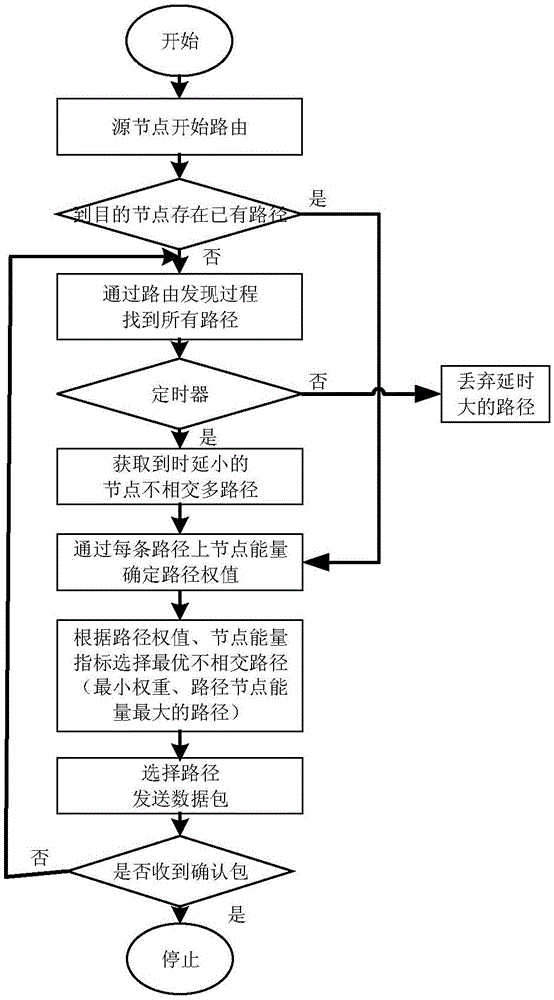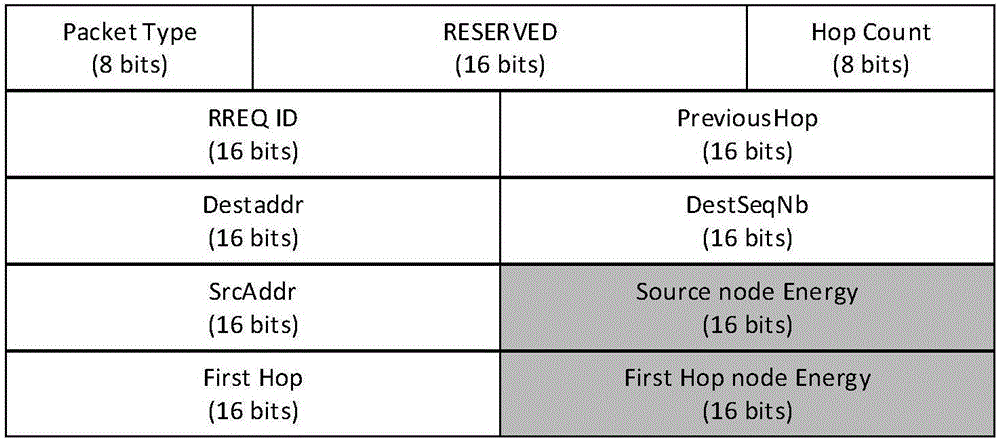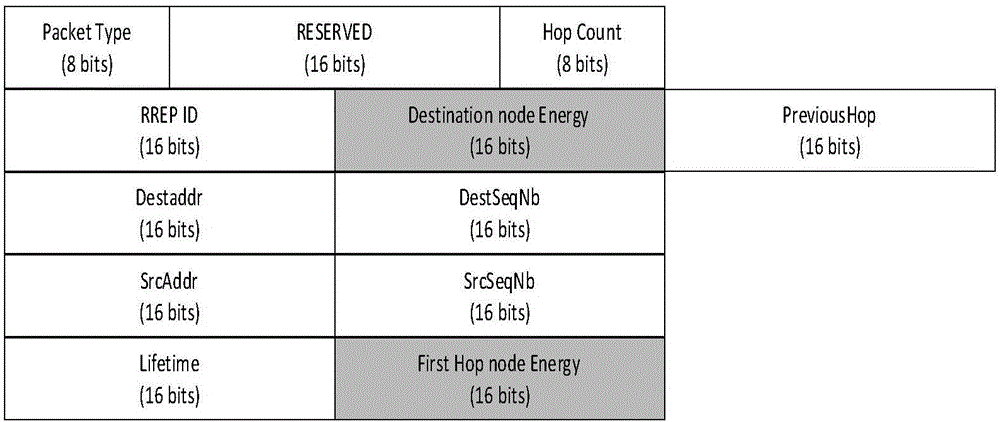AOMDV-based energy aware node-disjoint multipath routing algorithm
A node disjoint, energy-aware technology, applied in the field of energy-aware node disjoint multi-path routing algorithm based on AOMDV, can solve the problem of not considering link congestion, link packet loss rate bandwidth, etc. Lifecycle Effects
- Summary
- Abstract
- Description
- Claims
- Application Information
AI Technical Summary
Problems solved by technology
Method used
Image
Examples
Embodiment Construction
[0032] The preferred embodiments of the present invention will be described in detail below with reference to the accompanying drawings.
[0033] figure 1 It is a flow chart of the disjoint multipath routing algorithm for energy-aware nodes proposed by the present invention. According to the route discovery stage and route reply stage, all possible disjoint multipaths are found through flooding; according to the data transmission stage, the routing data packet is designed, and the node energy field is added in the routing table to count the current node The energy of each path node is assigned a weight to each path according to the energy of each path node, and the link is screened to obtain the optimal link. The routing algorithm consists of the following steps:
[0034] S1: In the neighbor discovery phase, firstly, each node in the network discovers their neighbor nodes by broadcasting HELLO packets and exchanging messages within a specified time interval, determines the l...
PUM
 Login to View More
Login to View More Abstract
Description
Claims
Application Information
 Login to View More
Login to View More - R&D
- Intellectual Property
- Life Sciences
- Materials
- Tech Scout
- Unparalleled Data Quality
- Higher Quality Content
- 60% Fewer Hallucinations
Browse by: Latest US Patents, China's latest patents, Technical Efficacy Thesaurus, Application Domain, Technology Topic, Popular Technical Reports.
© 2025 PatSnap. All rights reserved.Legal|Privacy policy|Modern Slavery Act Transparency Statement|Sitemap|About US| Contact US: help@patsnap.com



